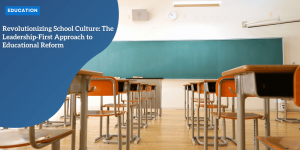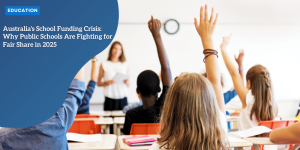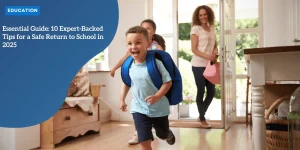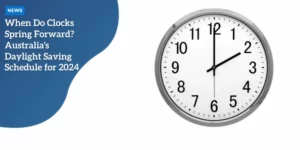Mobile Phone and Vaping Bans Transform Australian Classroom Experience, Study Shows
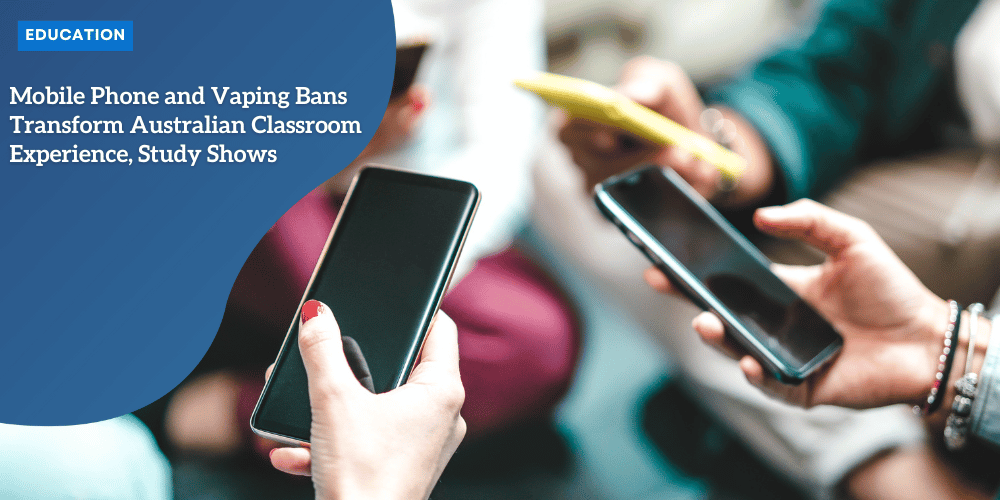
Anúncios
Key Findings from NSW School Principal Survey
Significant Improvements in Student Behavior
The latest survey of 1,000 school principals in New South Wales (NSW) brings to light significant enhancements in student behavior. The results are, indeed, a testament to the effectiveness of the recent government-imposed restrictions on mobile phones and vaping.
Over the past year, principals have observed transformative changes in classroom dynamics and student engagement.
Reduction in Classroom Distractions
A standout finding from the survey is an astounding 87% reduction in classroom distractions. Principals have attributed this to the strict mobile phone restrictions introduced across schools.
With fewer distractions at hand, students are now more focused on their lessons. These findings underscore the pivotal role of such policies in fostering a conducive learning environment.
Anúncios
Improvement in Learning Outcomes
Not only have distractions been minimized, but there has also been a remarkable 81% improvement in learning outcomes. With mobile phones out of the picture, students are concentrating better and absorbing more information during class.
This shift is a positive signal for teachers, students, and parents alike, highlighting a move towards more effective education and better academic achievement.
Positive Impact on Classroom Environment
The restrictions on mobile phones have ushered in a positive shift in classroom environments. Teachers report more orderly and attentive classes, leading to a more productive and fulfilling teaching experience.
With the absence of frequent buzzing and notifications, the overall classroom atmosphere has become more serene and focused, allowing for meaningful interaction and learning.
Anúncios
The significant strides made as evidenced by the NSW school principal survey mark the beginning of a promising journey towards optimized educational settings.
The chapter will now shift focus to examining broader impacts on social media and behavioral issues, shedding light on further positive outcomes following recent policy changes.
Impact on Social Media and Behavioral Issues
Recent data highlights the transformative impact that restrictions on mobile phones and social media usage have had in South Australia. A significant 63% decline in critical incidents involving social media has been observed.
This change reflects the positive outcomes of implementing rigorous policies aimed at minimizing digital distractions and fostering a focused learning environment.
Reduction in Social Media-Related Incidents
The restrictions on mobile phone usage have directly correlated with a noticeable decrease in critical incidents involving social media in South Australian schools. The 63% reduction is a testament to the efficacy of these policies in curbing disruptive behaviors linked to social media platforms.
By limiting access to these digital distractions, schools have created a safer and more controlled environment for students. This decrease in incidents not only promotes a conducive learning atmosphere but also alleviates the burden on school administrators and teachers who previously had to manage these complex issues.
Decrease in Overall Behavioral Issues
Alongside the decline in social media-related incidents, there has been a 54% reduction in overall behavioral problems in schools. This significant improvement underscores the broader benefits of the restrictions.
Reducing these behavioral issues has palpable positive effects on both students and teachers.
Consistently better student behavior allows for smoother, more focused educational experiences and lessens the number of disciplinary actions needed. In essence, this marks a shift towards a more harmonious school environment where the focus remains on learning and personal growth.
Active and Social Playgrounds
Another noteworthy outcome is the resurgence of playgrounds as vibrant social spaces. With the reduced use of mobile phones, children are returning to more traditional forms of play and social interaction.
Playgrounds have once again become noisy and engaging hubs where students can connect with peers through physical activities and face-to-face conversations.
This shift encourages physical fitness, fosters interpersonal skills, and strengthens the student community. As students set aside their screens, they are rediscovering the joys of active play and genuine social interactions.
The positive trend in behavioral improvements and increased playground activity points to a renewed focus on the overall well-being of students. Rather than being isolated by their screens, students are becoming more engaged with their surroundings and each other, which is supportive of their mental health and social development.
These findings pave the way for further evaluation of how targeted policies can address other prevalent issues facing the student population. Looking ahead, continuing to build on these successes will be crucial in shaping a holistic and lasting educational experience for all students.
Success of Vaping Reforms
High Impact on Youth Vaping Rates
The introduction of vaping reforms has led to significant drops in vaping rates among young Australians. A revealing study by the South Australian Health and Medical Research Institute (SAHMRI) highlighted a notable decrease in vaping rates by a third among individuals aged 15 to 29 when comparing 2024 to 2023.
This decline signals a pivotal shift in youth culture as nicotine addiction trends start to reverse.
Reduction in School Suspensions
The impact of these reforms is perhaps most palpable in schools. Vaping-related suspensions have halved, reflecting the success of strict regulations and educational campaigns.
According to a survey outlined in Student Behaviour Improving, these measures have effectively reduced the instances of vaping-related issues within school premises, fostering a healthier and more focused learning environment.
Teenage Vaping Declines
The Cancer Council’s Generation Vape study further substantiates the effectiveness of these reforms, particularly among younger teens (14 to 17 years old).
This study reports a noticeable decline in vaping within this age group, indicating an encouraging trend towards prevention and early intervention efforts.
As Minister for Health Mark Butler underscores, these statistics illustrate how the Albanese Government’s strategies are successfully combating the rise of nicotine addiction among young people.
Minister for Communications Michelle Rowland reinforces this sentiment, emphasizing the collective responsibility shared by government bodies, educators, parents, and the community to safeguard young Australians and promote their well-being.
The ongoing commitment to furthering these initiatives demonstrably improves not just individual health, but also the broader social fabric within schools and communities.
Government Response and Future Direction
Reforms Aimed at Preventing Nicotine Addiction
The Albanese Government has ushered in landmark reforms to curb nicotine addiction among young Australians. By implementing stringent restrictions on vaping, the government has made significant strides in fostering a healthier environment for students.
 Combating vaping
Combating vaping
According to the latest data, vaping-related suspensions in schools have decreased by 50%, demonstrating the robust impact of these measures Student behaviour improving, new data shows.
Additionally, the Cancer Council’s Generation Vape study highlights a decline in vaping among 14 to 17-year-olds, further underscoring the effectiveness of these reforms.
Health Minister Mark Butler emphasized the importance of these efforts, noting that the data shows a decisive turn in combating the scourge of vaping.
Collaborative Approach
A key factor in the success of these reforms has been the collaborative approach between various ministries. The Education, Health, and Communications ministries have worked in tandem to create a cohesive and comprehensive strategy aimed at protecting young people.
This collaboration has been crucial in addressing the multifaceted issues related to student well-being and safety.
Education Minister Jason Clare reiterated the positive impact of the bans on both mobile phones and vapes, citing a marked improvement in classroom behavior and more dynamic playground environments.
This ensures that children can engage in active play and social interaction, essential components of a healthy developmental process.
Communications Minister Michelle Rowland highlighted the collective responsibility of keeping children safe. “We’ve listened to young people, parents, and experts to develop these laws centered on protecting—and not isolating—young people,” she explained. This nuanced approach aims to balance restriction with support, fostering a nurturing environment for students.
Ongoing Commitment to Youth and Vulnerable Populations
The Albanese Government remains steadfast in its commitment to safeguarding young Australians. The reforms in place are just the beginning of an ongoing effort to protect vulnerable populations from the dangers of nicotine addiction and other harmful behaviors.
As part of this commitment, regular reviews and data assessments will ensure that the policies remain effective and responsive to emerging challenges.
Future initiatives will continue to build on the progress made, aiming for further reduction in nicotine dependency and improved student behavior across the board. Ministers have vowed to remain vigilant and proactive, ensuring that the well-being of young Australians remains a top priority.
This collaborative and committed approach serves as a model for other regions looking to achieve similar successes in education and public health.

